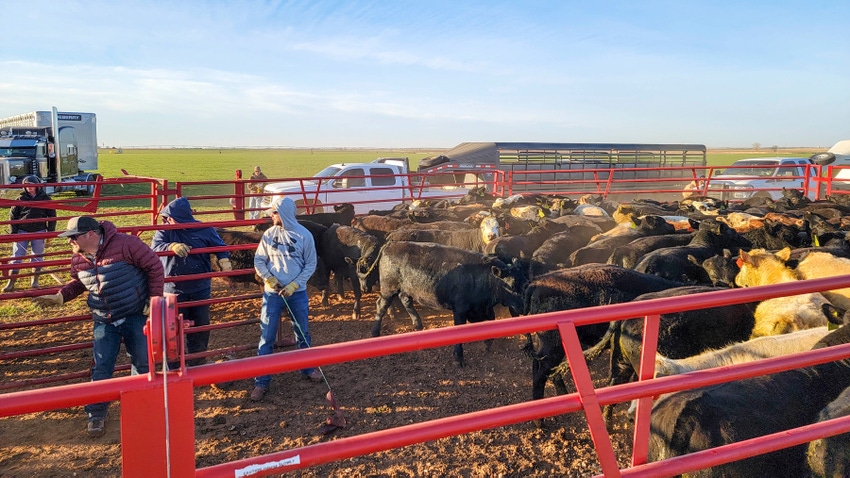Guarding Success: Bagley Risk Management Solutions
Guarding Success: Bagley Risk Management Solutions
Blog Article
Recognizing Livestock Threat Security (LRP) Insurance Coverage: A Comprehensive Guide
Browsing the world of livestock risk protection (LRP) insurance can be a complicated endeavor for many in the agricultural sector. From just how LRP insurance works to the various coverage choices readily available, there is much to reveal in this comprehensive guide that can possibly form the way animals manufacturers come close to risk monitoring in their organizations.

How LRP Insurance Works
Sometimes, comprehending the mechanics of Livestock Threat Protection (LRP) insurance coverage can be intricate, however breaking down exactly how it works can provide clarity for farmers and ranchers. LRP insurance coverage is a danger monitoring tool developed to shield animals producers against unanticipated rate decreases. It's vital to note that LRP insurance policy is not a profits guarantee; instead, it focuses exclusively on rate risk protection.
Eligibility and Coverage Options

When it comes to insurance coverage choices, LRP insurance policy provides manufacturers the flexibility to choose the protection degree, protection period, and endorsements that ideal suit their threat management requirements. Protection levels generally range from 70% to 100% of the expected finishing value of the insured livestock. Producers can likewise select protection periods that straighten with their manufacturing cycle, whether they are guaranteeing feeder livestock, fed livestock, swine, or lamb. Endorsements such as price risk security can further customize insurance coverage to shield against unfavorable market variations. By recognizing the eligibility criteria and protection choices offered, livestock producers can make enlightened decisions to handle danger successfully.
Advantages And Disadvantages of LRP Insurance
When evaluating Livestock Risk Defense (LRP) insurance, it is important for animals producers to weigh the negative aspects and benefits intrinsic in this threat management tool.

One of the key benefits of LRP insurance coverage is its capacity to offer defense versus a decline in livestock rates. This can help secure producers from financial losses resulting from market fluctuations. Furthermore, LRP insurance policy offers a level of versatility, allowing producers to customize insurance coverage levels and policy durations to match their particular requirements. By securing a guaranteed cost for their livestock, producers can much better take care of threat and prepare for the future.
Nonetheless, there are likewise some downsides to consider. One constraint of LRP insurance coverage is that it does not safeguard versus all kinds of risks, such as disease break outs or all-natural catastrophes. Additionally, premiums can in some cases be costly, especially for producers with huge livestock herds. It is crucial for manufacturers to meticulously examine their individual risk exposure and financial circumstance to identify if LRP insurance coverage is the right threat monitoring device for their operation.
Understanding LRP Insurance Premiums

Tips for Optimizing LRP Perks
Taking full advantage of the benefits Discover More Here of Livestock Threat Protection (LRP) insurance policy needs strategic preparation and aggressive risk administration - Bagley Risk Management. To take advantage of your LRP coverage, take into consideration the complying with tips:
Frequently Assess Market Conditions: Stay notified concerning market trends and rate variations in the livestock industry. By checking these aspects, you can make educated choices regarding when to acquire LRP coverage to shield against possible losses.
Set Realistic Insurance Coverage Degrees: When picking protection degrees, consider your manufacturing costs, market value of animals, and potential risks - Bagley Risk Management. Establishing practical protection levels makes certain that you are adequately secured without overpaying for unnecessary insurance coverage
Diversify Your Protection: As opposed to relying solely on LRP insurance coverage, take into consideration expanding your danger management techniques. Incorporating LRP with other threat monitoring devices such as futures agreements or alternatives can give comprehensive coverage against market uncertainties.
Testimonial and Adjust Coverage Consistently: As market conditions transform, periodically evaluate your LRP coverage to guarantee it aligns with your present threat exposure. Changing protection levels and timing of purchases can help enhance your risk security approach. By following these ideas, you can make the most of the advantages of LRP insurance and safeguard your livestock operation against unanticipated threats.
Final Thought
In conclusion, livestock danger defense (LRP) insurance is a useful device for farmers to manage the monetary dangers connected with their animals operations. By understanding just how LRP functions, eligibility and coverage options, in addition to the pros and disadvantages of this insurance policy, farmers can make informed choices to shield their incomes. By thoroughly taking into consideration LRP costs and applying approaches to make best use of advantages, farmers can minimize prospective losses and make certain the sustainability of their procedures.
Animals producers interested in acquiring Animals Danger Protection (LRP) insurance coverage can explore an array of eligibility criteria and coverage choices customized to their specific animals operations.When it comes to insurance coverage choices, LRP insurance policy supplies producers the flexibility to choose the coverage level, coverage period, and recommendations that ideal match their look at this now threat management requirements.To grasp the complexities of Animals Danger Security (LRP) insurance totally, recognizing the variables affecting LRP insurance policy premiums is critical. LRP insurance coverage costs are determined by numerous components, including the protection degree picked, the expected price of animals at the end of the coverage period, the type of animals being insured, and the length of the insurance coverage period.Evaluation and Readjust Protection Routinely: As market conditions transform, occasionally review your LRP protection to guarantee it straightens with your existing risk exposure.
Report this page